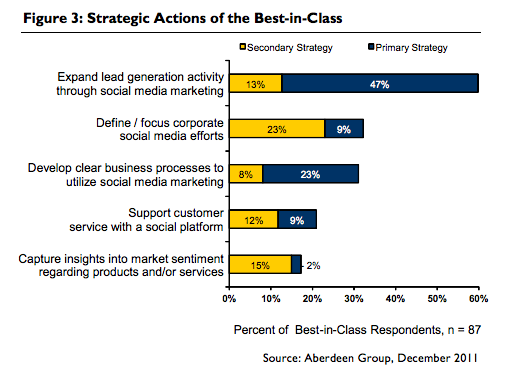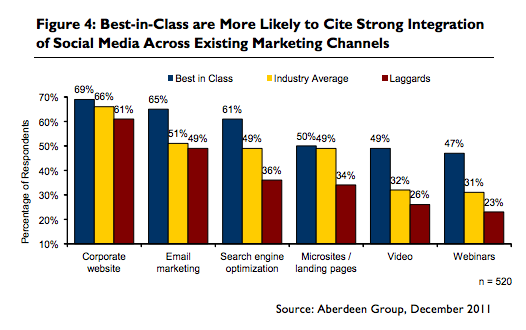Study: Content Marketing is becoming big in B2B, focus is shifting…
A recent study by Curata identified the main drivers of content marketing activities in B2B companies. The findings are based on Curata’s poll of 465 B2B marketing professionals in October 2012 from business owners, VPs of Marketing, CMOs, managers, marketing consultants and agencies.
The study explains that content marketing continues to become more and more important for B2B marketers. However, the drivers for content strategies are shifting towards thought leadership and market education.
The results show that 87% of responding B2B marketing professionals use content marketing for business goals targets (5% increase to 2011). Content marketing gets followed by SEO (67%) and event marketing (60%) as further leading channels in marketing strategies in 2012.

Further findings of the study show that although engaging customers (81%) has top priority for their content marketing efforts, thought leadership and educating the market are increasing in their importance for the business. More than half of B2B marketers (56%) state thought leadership as a key objective (13% increase to 2011). Also, educating the market (47%) increased by 3% to last year. Just 24% see SEO as a key objective (still a 5% increase to last year). Former top marketing tactics (print/TV/radio) went down from 32% to 26% this year.

 Spot On!
Spot On!
Lead generation is still one of the key marketing goals for B2B marketers according to the survey. Most B2B marketers (82%) see driving sales and leads as their top marketing goal. Establishing thought leadership (42%), increasing brand awareness (40%), or increasing Web traffic (32%) follow in the next places. Content curation is also getting traction as the next step in content marketing. 57% of B2B marketers see it as an important evolution step. However, content curation is in it’s infancy when only 34% of curating content marketers have done it since six months or less. Quite scary I found that a staggering 43% of B2B marketers don’t measure the efficiency of their content marketing efforts. I found interesting that the topic brand advocates was not on the spot in terms of content marketing in this study.







 Some weeks ago, we have discussed the opportunity for car manufacturers with
Some weeks ago, we have discussed the opportunity for car manufacturers with